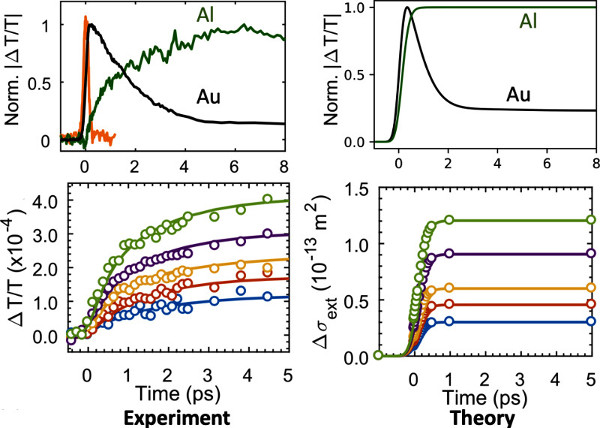Aluminum ultrafast dynamics published in Nano Lett.

M.-N. Su, C. Ciccarino, S. Kumar, P. Dongare, S. A. H. Jebeli, D. Renard, Y. Zhang, B. Ostovar, W.-S. Chang, P. Nordlander, N. J. Halas, R. Sundararaman, P. Narang, and S. Link, “Ultrafast Electron Dynamics in Single Aluminum Nanostructures;, Nano Lett., Just Accepted Manuscript (2019)
The field of plasmonics promises to shrink optical phenomena to the nanoscale, and in most cases relies on nanostructures of metals like gold. Aluminum could be the future of plasmonics, not only because it is abundant and inexpensive, but also because it could push plasmonics from visible to even ultraviolet frequencies! However, the mechanisms of charge carrier excitation and relaxation in aluminum, which critically determine its utility in plasmonic hot carrier devices, are not yet quantitatively understood. In particular, ultrafast pump-probe measurements of aluminum show a slow rise time and no decay in contrast to gold, even though carriers relax faster in aluminum by both electron-electron and electron-phonon lifetimes scattering. This has remained puzzling to researchers in the ultrafast dynamics field for many years.
In collaboration with the Link experimental research group at Rice University, we identify strong electron-phonon coupling and insensitivity of probe response to electron temperature as the solution to this long-standing puzzle. We use first principles electronic-structure calculations to evaluate the temporal evolution of the optical response and explain the experimental trends with excellent agreement. We show that the optical response depends only on the temperature of the atoms, and not on that of the electrons, which explains the marked differences from gold. These insights pave the way for exploiting hot carriers in aluminum for low-cost and ultraviolet plasmonic devices of the future.
